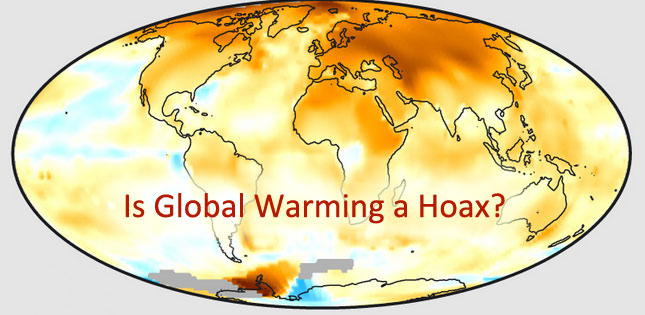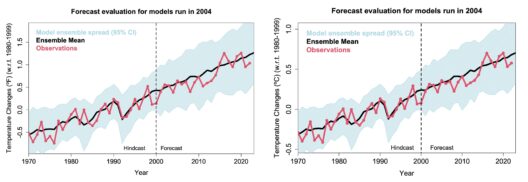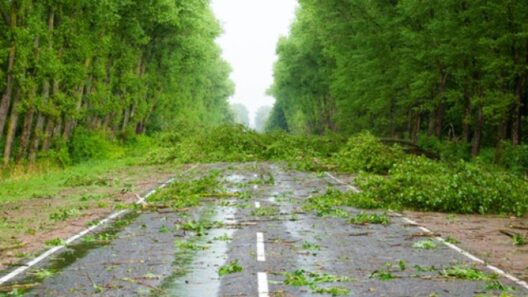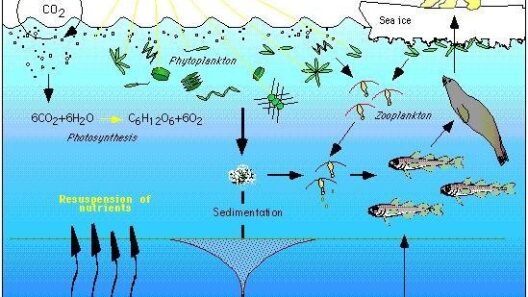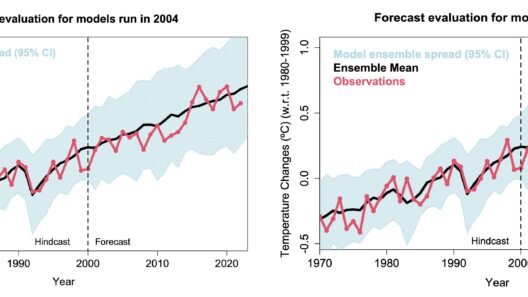The notion that cold weather negates the existence of global warming is akin to suggesting that a single raindrop heralds the end of a drought. It pricks at the fabric of scientific understanding and misleads those who are unacquainted with the intricacies of climate science. In this discourse, we shall unravel the threads of this myth and elucidate the broader tapestry of climate change that interweaves varied weather patterns across the globe.
First and foremost, it is imperative to grasp the distinction between weather and climate. Weather refers to the short-term atmospheric conditions in a specific place at a specific time. Think of it as the daily mood of the atmosphere—sometimes sunny, sometimes stormy. In contrast, climate is the long-term average of weather patterns over extended periods, often spanning decades or even centuries. It is, in essence, the personality of a region, shaped by various influences, including latitude, elevation, and ocean currents.
During a particularly frigid winter, one might find their thoughts wandering to the idea that global warming, with its associations of rising temperatures, is a fallacy. However, this is a misguided interpretation. The reality is that climate change can exacerbate cold weather events, leading to extreme conditions. This phenomenon is often explained by the concept of the polar vortex—a large area of low pressure and cold air surrounding the Earth’s poles. In times of climate disruption, the polar vortex can become wobbly. As a result, cold Arctic air can plunge unexpectedly into temperate regions, causing dramatic drops in temperature.
Furthermore, it is crucial to consider the long-term trends in global temperatures rather than being swayed by transient, localized events. Scientific data unequivocally indicates that the earth’s average surface temperature has risen by approximately 1.2 degrees Celsius since the late 19th century. This increment may appear modest, yet its ramifications are monumental—melting glaciers, rising sea levels, and increasingly erratic weather patterns serve as harbingers of change.
To attribute a single cold snap to the negation of global warming is akin to judging the overall health of a patient based on a single, fleeting symptom. Look back at the unfolding narrative of climate records. The majority of the warmest years on record have occurred in the last two decades. In juxtaposition, even as cold weather events persist, they do not negate the broader trajectory of warming. Each instance of extreme cold can be viewed as a chapter in a much larger story, marked by its chapters of heat and turmoil.
One cannot overlook the multifaceted nature of climate change itself. This phenomenon does not merely entail the gradual elevation of temperatures; it encompasses a variety of oscillations and anomalies, including shifts in precipitation patterns and increases in the frequency and severity of extreme weather events. The intricate dance of climate is influenced by a wide array of factors, including human activity. Deforestation, industrial emissions, and the combustion of fossil fuels have all played a significant role in intensifying the greenhouse effect, trapping heat within the atmosphere and wreaking havoc on delicate ecosystems.
Moreover, it is evident that effective communication surrounding climate science is vital. Misinformation can propagate swiftly, casting shadows over the truth. This is particularly pronounced when individuals conflate climate change with weather events. Simple, relatable metaphors may serve as bridging tools to connect the dots between abstract scientific concepts and public understanding. Picture climate change as a slowly boiling pot of water—while the temperature rise may be imperceptible in the moment, the cumulative effects are undeniably profound, leading to eventual chaos.
Educators and advocates alike bear the responsibility of conveying the urgency of recognizing global warming’s complexity. Educational initiatives promoting awareness of climate science can act as vital lifelines, cutting through the fog of confusion surrounding the linkage between cold weather and climate trends. For instance, in the realm of policy-making, fostering a robust understanding of climate change can catalyze necessary legislative actions that address both mitigation and adaptation strategies.
The myth that cold weather signifies the absence of global warming not only undermines scientific integrity but hampers comprehensive action toward sustainability. Humanity stands at a crossroads, confronted with both the challenges and opportunities presented by climate change. Recognizing patterns, understanding underlying processes, and appreciating the finitude of our resources are critical steps toward influencing a more sustainable future.
Ultimately, the conversation surrounding climate change must not only focus on statistics but be imbued with empathy. Each individual has a role to play in advocating for ecological stewardship and championing policies that reduce carbon footprints. As we navigate through the current climate reality, we must remain vigilant against the seductive simplicity of misinformation. By grounding discussions in fact, fostering awareness, and striving for action, we can illuminate the often yawning chasms between myth and reality.
In summation, cold weather does not disprove global warming; rather, it offers a misleading snapshot within an expansive landscape of climate variability. Understanding the nuanced interplay of weather events and climate change is paramount. With persistent dedication and informed dialogue, society can forge a path toward a more resilient and sustainable future, untangled from the clutches of misinformation.



